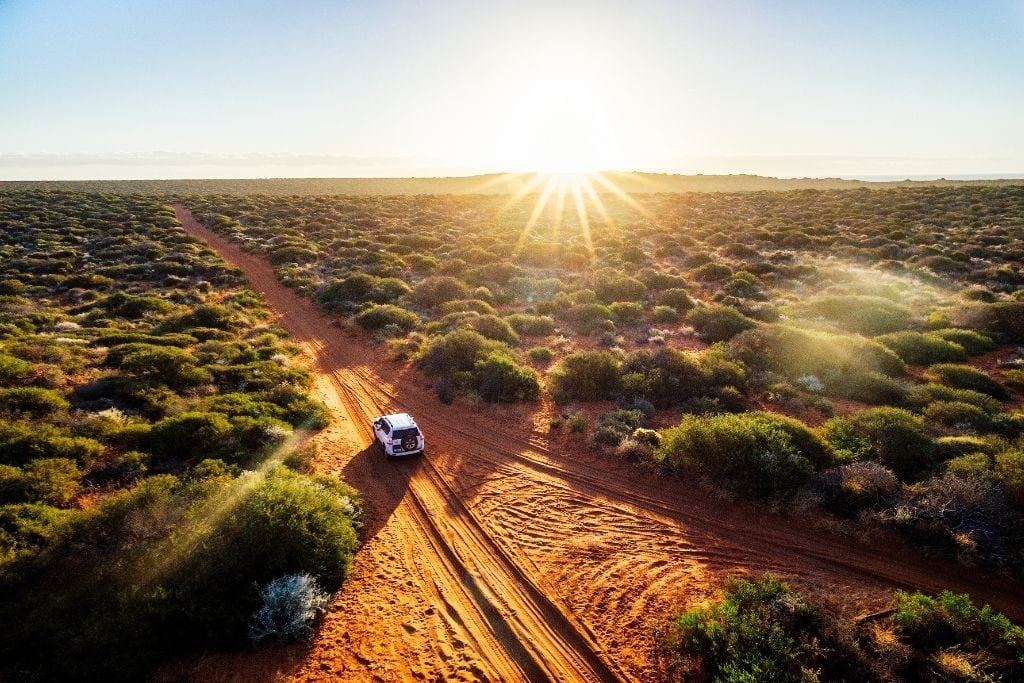Outback Australia the Ultimate Road Trip Guide: 10 Basics You Need to Know
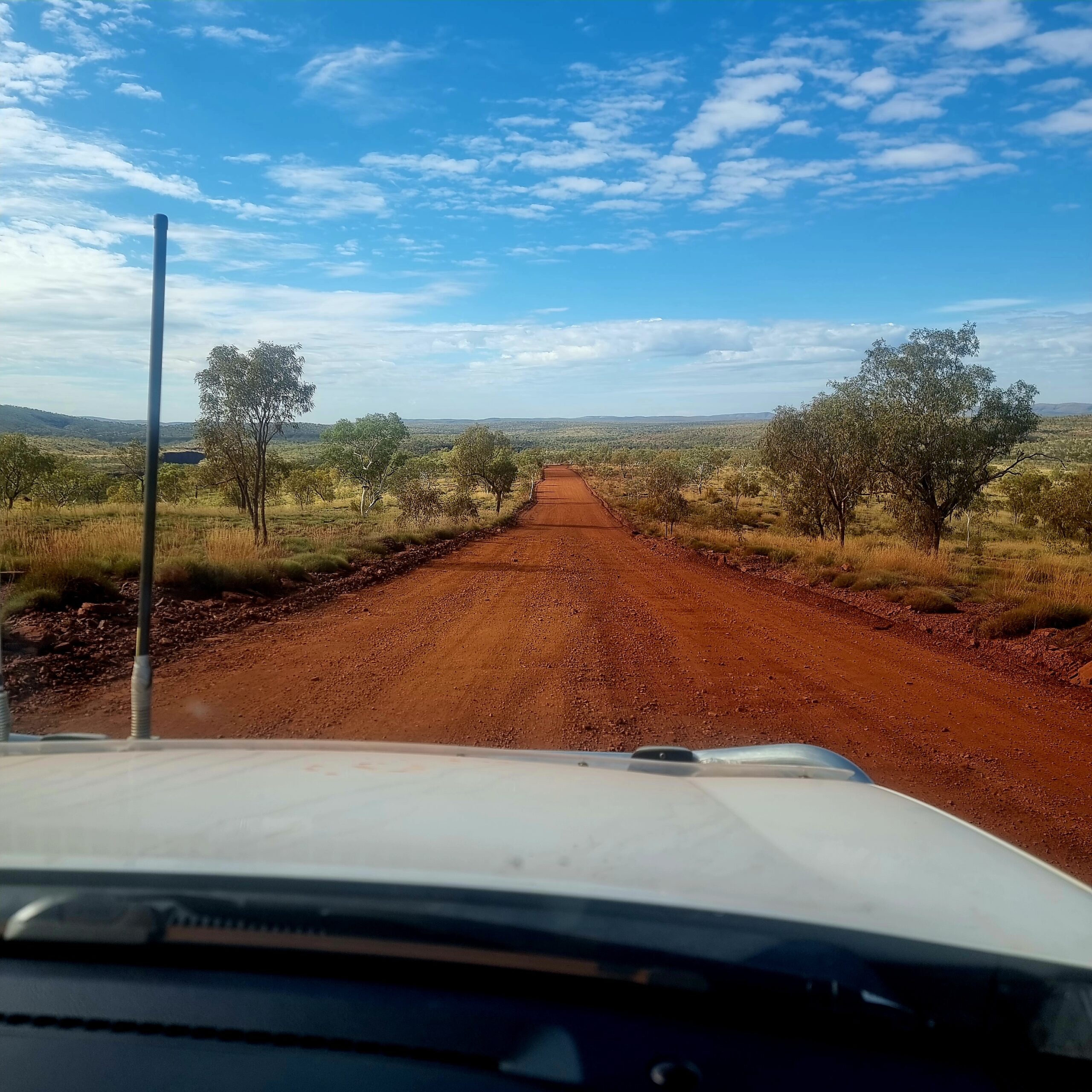
Why Prepare for an Outback Australia Road Trip?

Outback Australia offers rugged beauty, remote landscapes, and adventure like nowhere else. But it’s not a journey to take lightly. Unlike city drives, an Outback road trip demands careful preparation, the right equipment, and a solid plan. Whether you’re a first-time traveller or an experienced 4×4 adventurer, these basics will ensure a safe, enjoyable, and unforgettable experience.
Respecting Indigenous Land & Culture
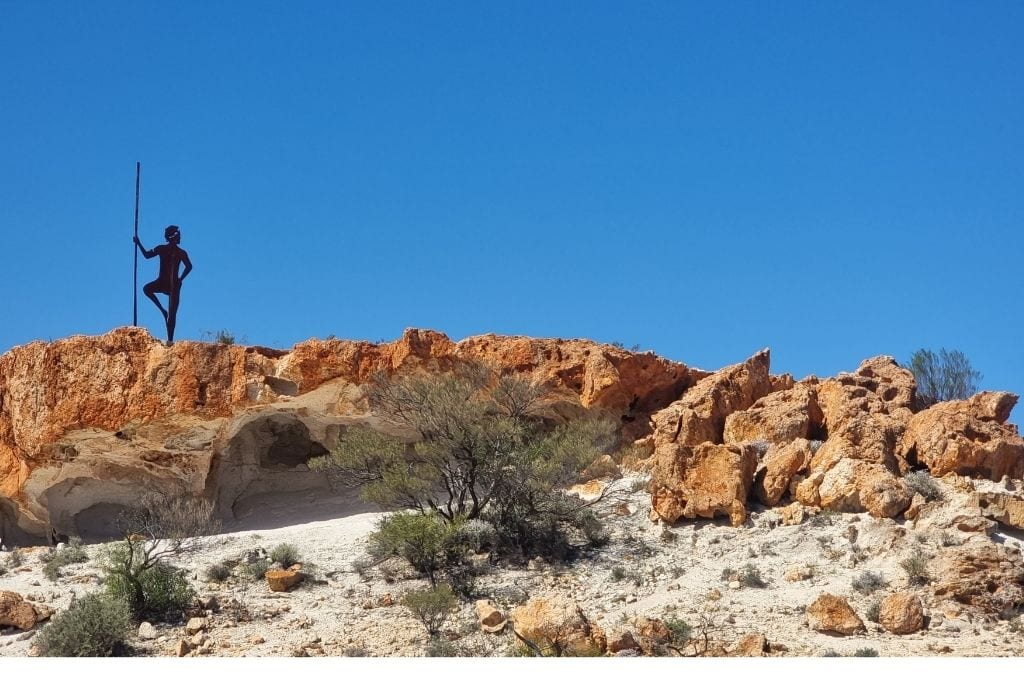
Many remote areas are home to Indigenous communities with deep cultural and spiritual ties to the land. Always show respect and seek permission before entering private or sacred sites. Some communities operate art galleries, camping grounds, cafes, and cultural tours. Uluru, for example, is entirely managed by its Traditional Owners. Support these communities when you are in remote Australia.
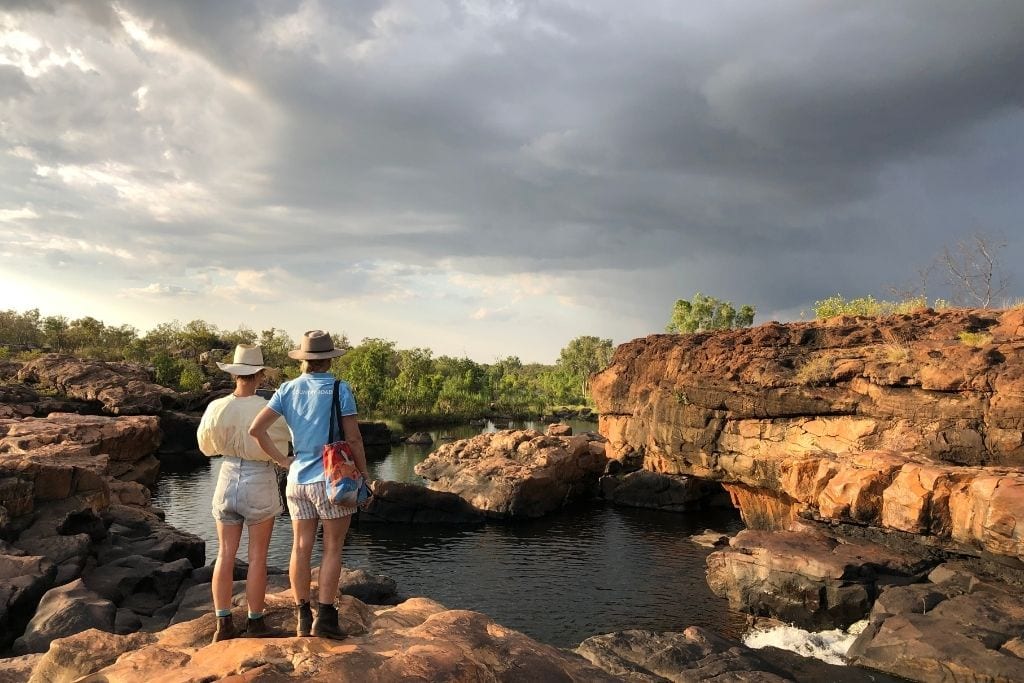
Support Indigenous-run businesses by purchasing authentic artwork, booking guided experiences, or staying at locally operated accommodations. Respect the land by disposing of waste properly, staying on designated paths, and not removing anything from cultural sites. If unsure, visit a local visitor center or ask community members for guidance.
1. Best Vehicles for Outback Australia Travel
A reliable 4×4 is essential for tackling dirt roads, sandy tracks, and river crossings.
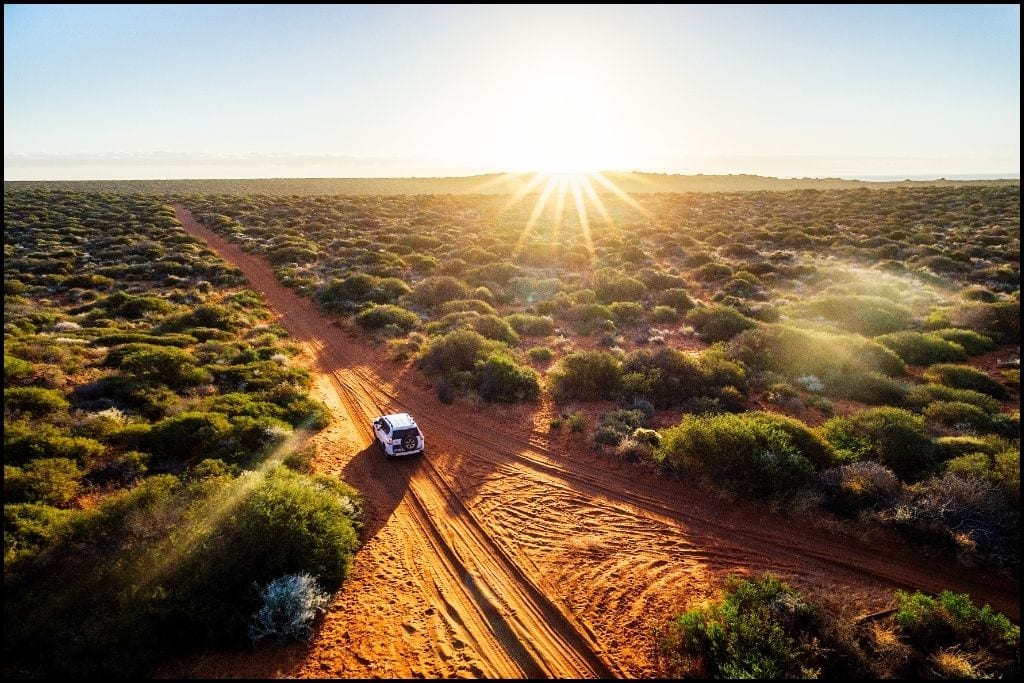
Utes vs. Wagons (SUV) : What’s Best?
In Australia, a ute (short for utility vehicle) is a pickup truck with an open cargo tray. Utes are hugely popular because of their versatility, load capacity, and durability on rugged Outback roads. However, they come with some hidden costs and trade-offs.
Best-Selling Utes in Australia

The Toyota Hilux and Ford Ranger consistently top the list as Australia’s best-selling vehicles—not just among utes but across all categories.
- Toyota Hilux – Known for durability and reliability, making it a top choice for remote travel.
- Ford Ranger – Offers strong performance and modern features, popular with tradies and adventurers alike.
- Isuzu D-MAX – A tough competitor with excellent towing capacity and off-road capability.
- Mazda BT-50 – Shares mechanicals with the D-MAX but has a slightly more refined interior.
Best-Selling 4×4 Wagons in Australia
Isuzu MU-X – A practical, rugged, and fuel-efficient option for travel tips, safety advice, and must-have gear for beginners and experienced adventurers.
Toyota LandCruiser 300 Series – The ultimate touring 4×4, known for reliability and power.
Nissan Patrol Y62 – A V8 powerhouse with great off-road capability and comfort.
Mitsubishi Pajero Sport – A mid-sized 4×4 with a strong reputation for durability.
Ford Everest – A modern SUV with off-road capability and towing power.
I have a Toyota Landcruiser Prado but that’s not on this list and it’s just fine.
Utes vs. Wagons: Pros & Cons
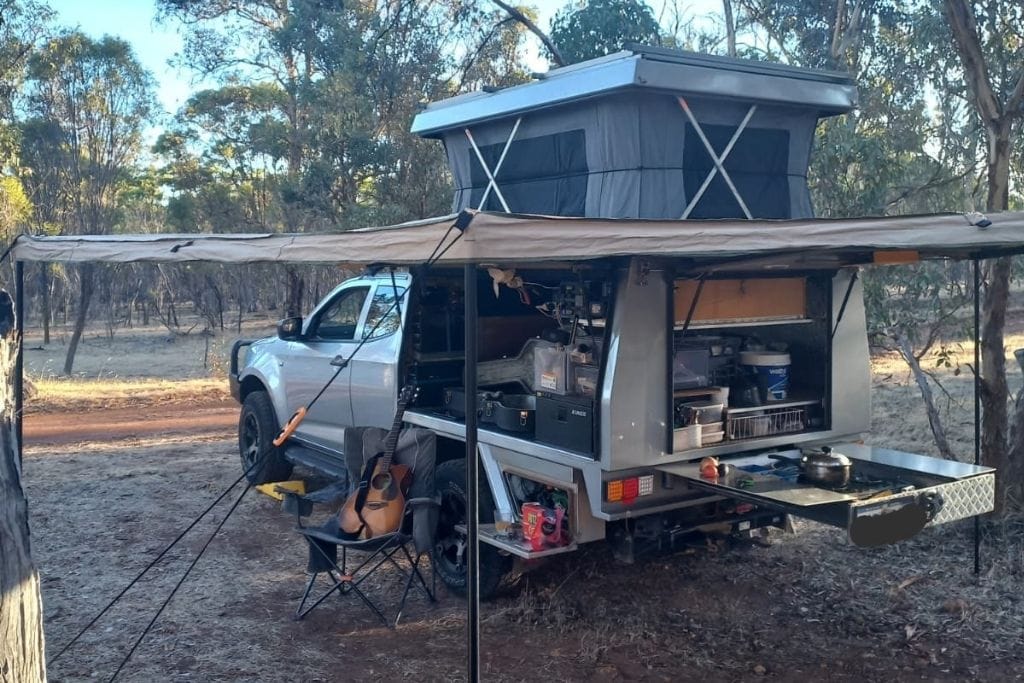
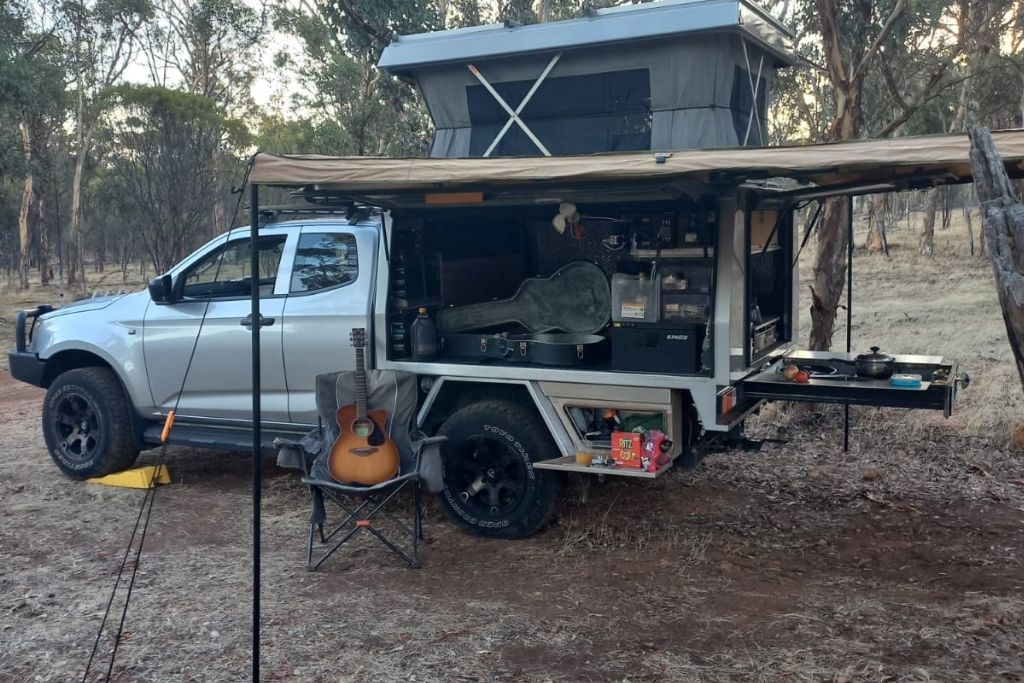
| Feature | Utes | Wagons (SUVs) |
|---|---|---|
| Storage | Large open tray for gear but may need a canopy | Enclosed storage, secure from weather. |
| Off-Road Handling | Strong, but can be less comfortable due to rear leaf suspension | Generally smoother ride, especially on long dirt roads. |
| Seating Capacity | Typically 2-5 seats | More seating and storage options 2-7 seats. |
| Fuel Efficiency | Can be higher due to weight and aerodynamics | Often better fuel economy for long-distance touring. However often you will find many SUV’s have swags and storage on the roof. This will dramatically effect the fuel economy. |
| Hidden Costs | Canopies, storage setups, and higher maintenance costs. | Less modification needed |
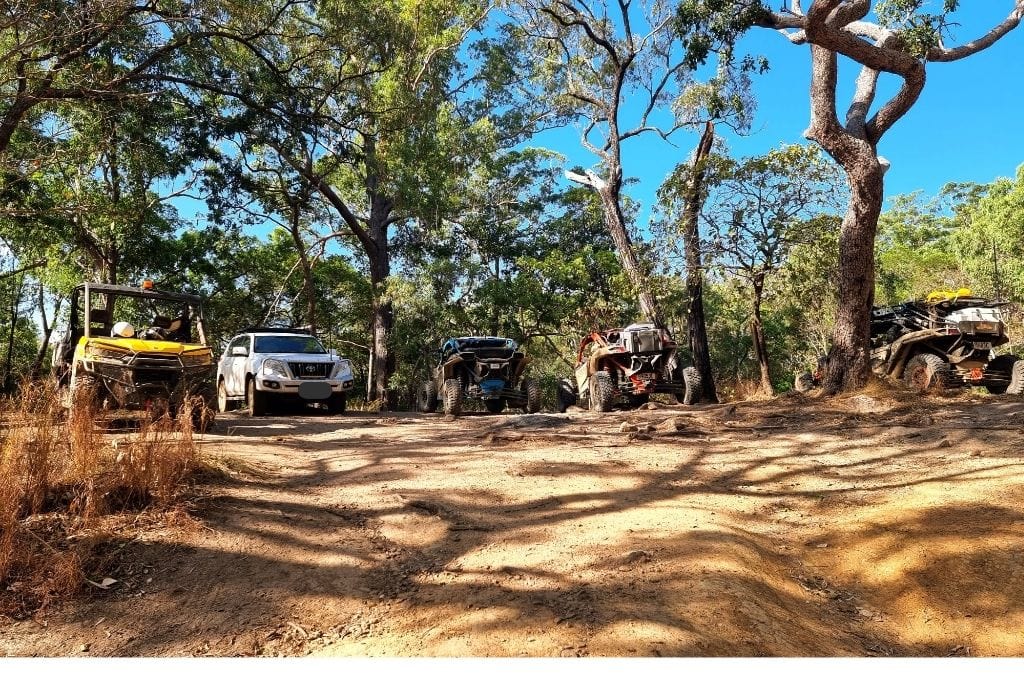
For long-term Outback Australia travel, a wagon-style 4×4 like the LandCruiser or Pajero might offer a more comfortable ride. However, if you need extra storage and towing capacity, a ute with a well-planned canopy setup is a great choice.
Renting vs. Buying: What’s Best?
For those without a 4×4, thinking of buying a 4×4 or visiting Australia, renting is a great option. Several reputable 4×4 hire companies operate nationwide, including:
- Britz Australia – Offers 4WD campers and well-equipped vehicles.
- Apollo Camper – Provides off-road-ready campervans and utes.
- Red Dirt Rentals – Specializes in 4WD hire for Outback travel.
- TJM 4×4 Hire – Offers fully equipped 4WDs with recovery gear.
- Cruisin’ Australia – Great for those looking to explore sealed routes.
The Advantage of Campers & Vans
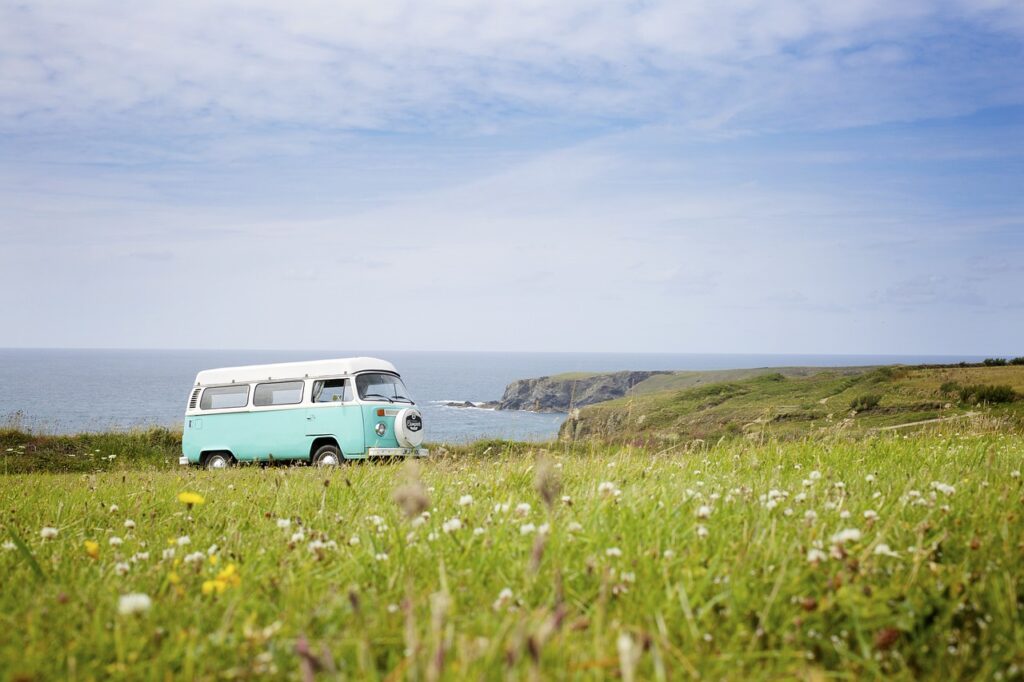
A campervan or motorhome allows for Outback exploration without needing extreme off-road capability. Routes like Explorers Way (Adelaide to Darwin) and The Big Lap (around Australia) are fully sealed, making them accessible to vans and standard 4WDs. For those wanting the freedom of camping without the complexity of deep off-road driving, this can be a great alternative to a hardcore 4×4 setup.
2. Essential Preparation: Gear & Supplies
Your trusty vehicle is your lifeline on an epic remote road trip, so ensuring it’s in top-notch condition is an absolute must before hitting the road. Regular car servicing is part of my road-tripping routine. Even if you’re not a car whiz, it’s crucial to grasp the basics. Know how to check your oil and fluid levels, check and clean your air filter, and check your tyre pressures and your tyres.
I have put together a guide below to support you in preparing your outback odyssey.
Food & Water
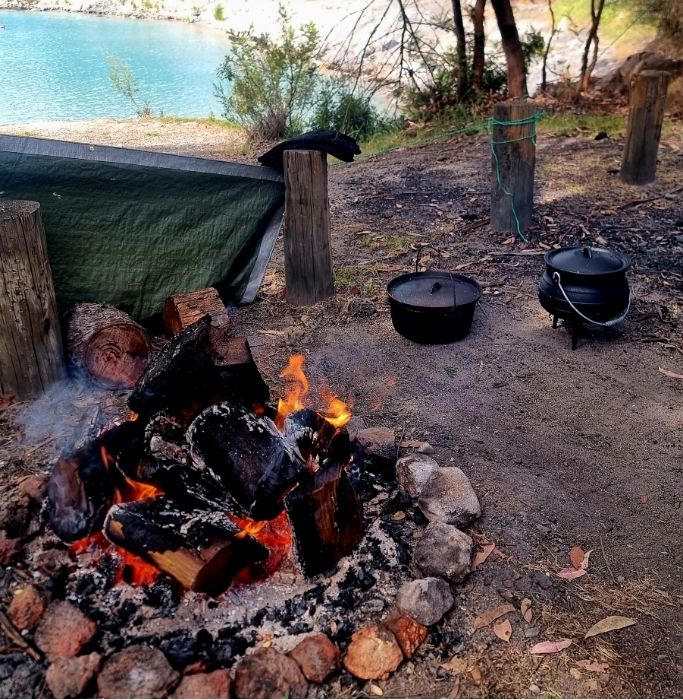
- Carry at least 20L of water per person for your road trip. I take at least 40 litres of drinking water when I travel alone. Although sometimes I can stay remote for long periods I am always well prepared. However, each person should take a minimum of 20 litres.
- Stock up on non-perishable food like canned goods, pasta, and long-life milk.
- Rubbish – you must take all your rubbish with you when you travel.
- Pack a portable gas stove for cooking in remote areas.
- South Australia and Western Australia have border controls when travelling between states. You do not need to show your passport as this is for fresh produce only. Ensure you read up on all states biosecurity rules before entering.
- I have a fridge/ freezer in my car that plugs into my 12volt DC power source. This is a wee bit of luxury I do recommend if you have space. Not essential but definitely a game-changer.
A Backup Power Source
such as a solar charger for essential electronics. Solar is very handy power supply in the Outback. My car has an axillary system for an added energy supply.
Mosquito Awareness & Protection
Mosquitoes are common in the Outback, especially near water sources and during warmer months. Some carry diseases like Ross River virus, Japanese Encephalitis and Dengue fever. To minimize risks:
- Wear lightweight, long-sleeved clothing.
- Use DEET-based or natural repellents.
- Sleep under a mosquito net if camping.
- Avoid outdoor activities near stagnant water at dawn and dusk.
Sun and Environment
Travelling in Outback Australia means respecting the environment. Be sun-smart and mosquito-smart to avoid discomfort and health issues.
First Aid Kit Essentials
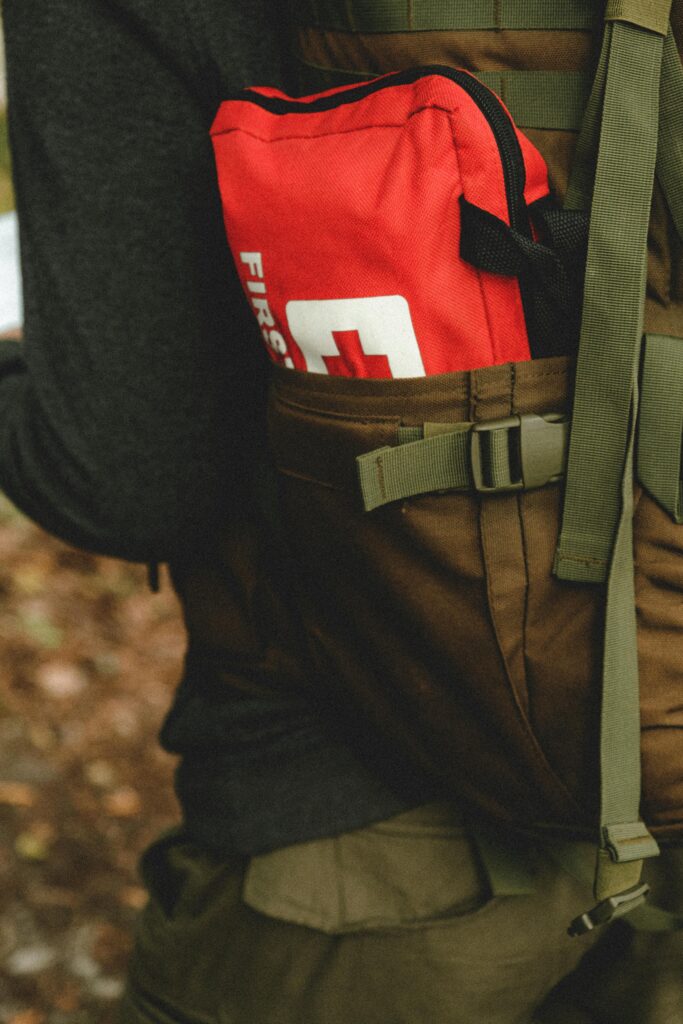
A well-equipped first aid kit is a must for any Outback road trip. This list is a guide based on Health Direct recommendations and should be tailored to individual needs. Always ensure you know how to use your first aid kit before an emergency arises.
Basic First Aid Kit:
- Adhesive bandages (assorted sizes)
- Sterile gauze pads and dressings
- Antiseptic wipes and antiseptic solution
- Adhesive tape
- Scissors and tweezers
- Disposable gloves
- Digital thermometer
- Pain relievers (e.g., paracetamol, ibuprofen)
- Antihistamines for allergies
- Burn gel or dressing
- Wound closure strips
- CPR face shield or mask
Additional Items for Camping, Car & Caravan:
- Emergency blanket
- Cold packs
- Eye wash solution and eye pads
- Snake bite bandage with indicator markers
- Triangular bandages
- Splints for immobilization
- Motion sickness tablets
- Tweezers for removing splinters or ticks
- Insect repellent
- Sunscreen (high SPF)
- Personal medications
- First aid manual or reference guide
If You Have Children:
- Infant and child-specific pain relievers
- Digital thermometer for children
- Oral rehydration salts
- Child-friendly insect repellent
- Additional adhesive bandages for minor cuts
Where to Keep Your First Aid Kit:
- In the vehicle: Store in an easily accessible compartment
- In the caravan or camper: Keep a second, well-stocked kit inside
- On your person during hikes or remote activities: A small, portable kit with the basics
3. Communications: UHF, Internet & Cellular Coverage in Remote Outback Australia
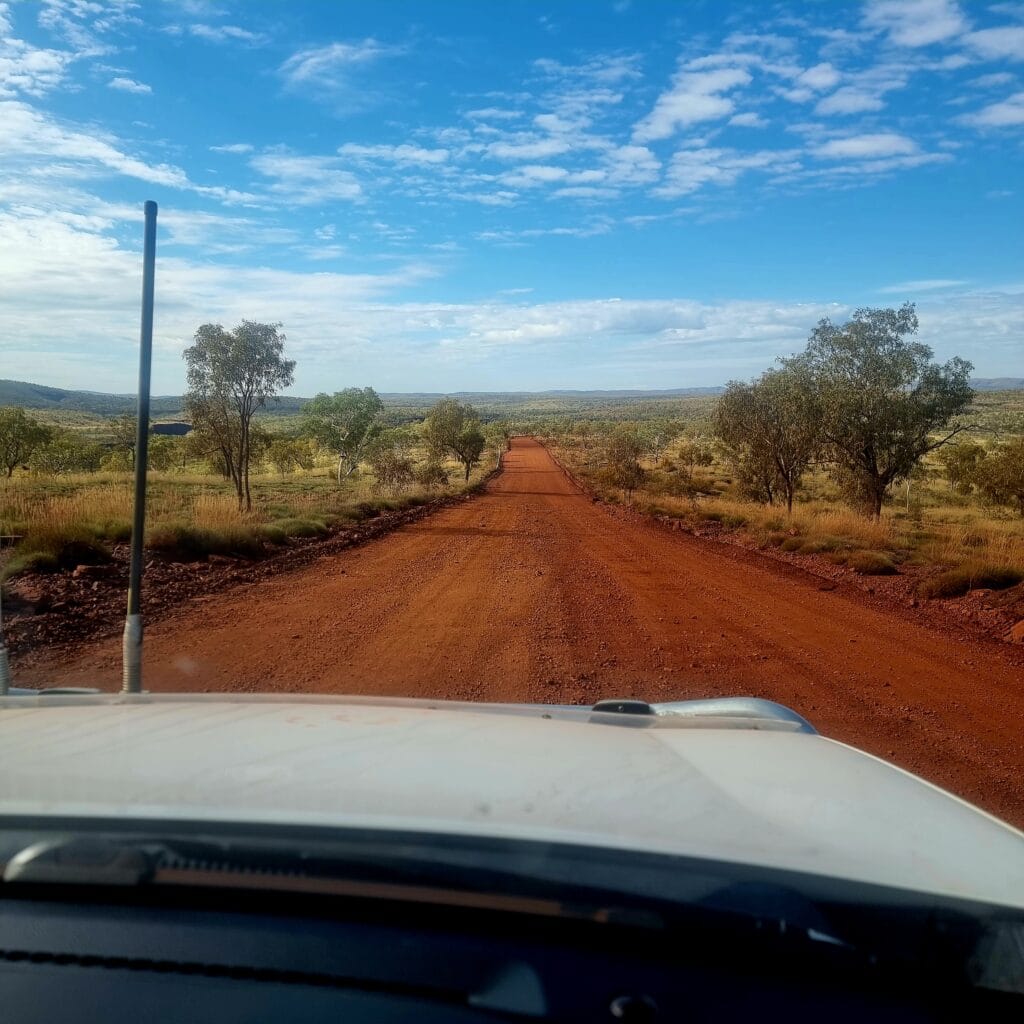
UHF Radio for Remote Travel
UHF radios are essential in Outback Australia, where mobile coverage is unreliable. Travelers should be familiar with key channels:
- Channel 10 – 4WD convoy coordination and national parks.
- Channel 18 – Caravan and camper communications.
- Channel 40 – Truck drivers and road conditions.
- Channel 5 & 35 – Emergency channels (monitored in some areas).
- Channel 11 – Call channel before switching to another frequency.
Staying on Channel 40 keeps you informed of road hazards and conditions from truck drivers who know the area well.
Internet & Cellular Coverage in Remote Areas
Mobile reception is unreliable. Roadhouses often have service, but not always. Telstra and Optus are the two main providers in remote areas. Coverage varies:
- Gibb River Road – Mostly Optus coverage, with some Telstra access.
- Queensland & Northern Territory – Primarily Telstra.
- Other regions – Service is unpredictable.
Staying Connected with Satellite Devices
When out of range, satellite devices like the Garmin inReach Mini provide essential communication:
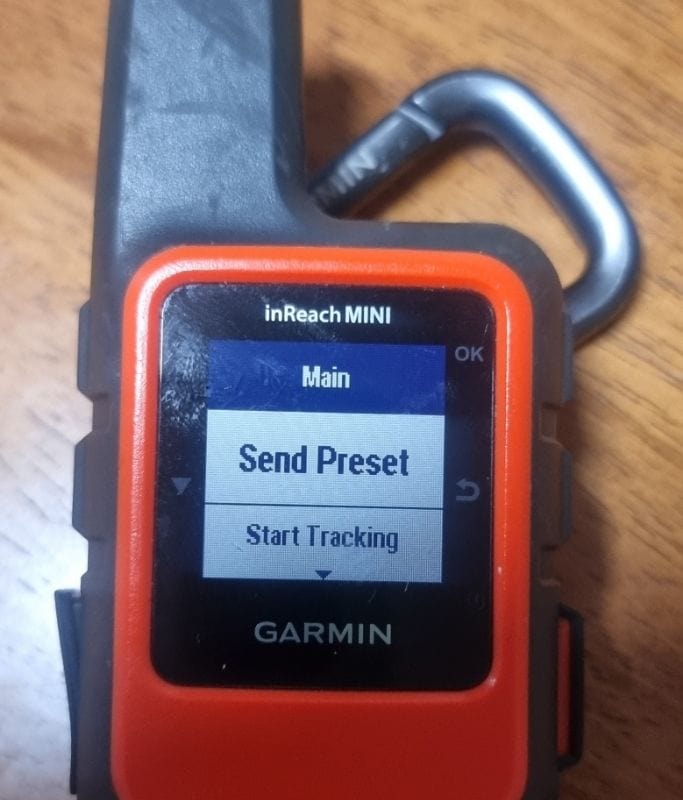
- Two-way global texting
- SOS emergency alerts
- Location sharing
Choosing the right plan is key. I use the Recreation plan (AUD 40/month) normall but upgrade to Expedition (AUD 75/month) in extremely remote areas. A satellite phone or personal locator beacon (PLB) is also recommended for added security.
Always keep communication devices charged and ensure they are working before setting out on any outback Australia adventure.
4. Emergency Equipment: Be Prepared
Spare Parts & Fluids
Having the right emergency gear is crucial for outback survival. Essential equipment includes:
Recovery Gear
- Tow rope, snatch straps, shackles, and recovery tracks (MaxTrax or equivalent).
- A jack and an appropriate base plate for soft ground. All cars come with a jack, or should, but know your way around how to use a jack and where it needs to be when changing a tyre.
- At least 2 spare tyres
- A reliable air compressor for tyre inflation and pressure adjustment. I have a kings thumper dual compressor. I have had it for 4 years and it works just fine.
- A tyre repair kit, including plugs and a puncture repair tool.
- A sturdy long-handled shovel for digging out tyres.
- portable jumpstarter if your car battery goes flat
- Extra fuses and radiator coolant.
- Engine oil and transmission fluid.
- Additional Jerry cans for fuel storage when covering long distances
This equipment is all redundant if you don’t know how to use them. Hence the next section is super important.
5. Four-Wheel Drive Courses
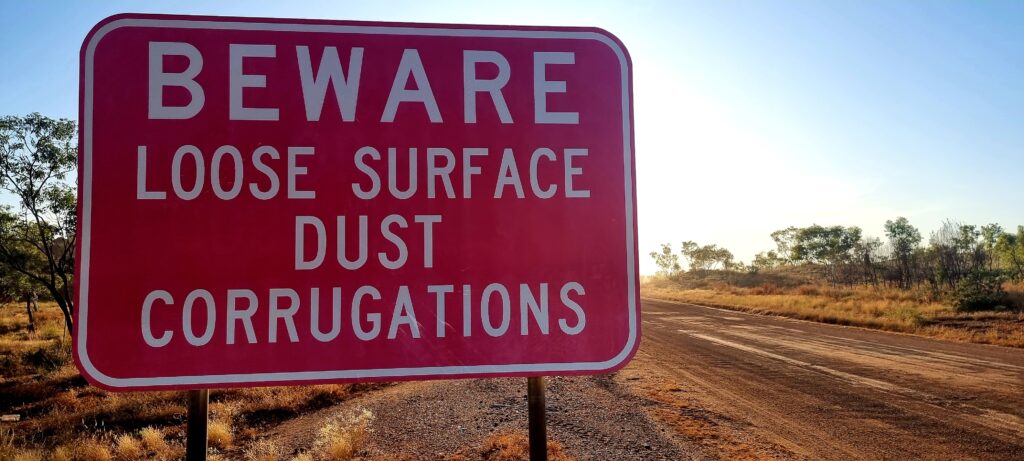
If you’re behind the wheel of a 4×4, and you are traveling around Outback Australia, you will most definitely come across this sign or a sign like it. Then you have to figure out what to do next. If you are unsure a four-wheel drive course is an absolute necessity. It’s not just about having the right vehicle; it’s about harnessing its full potential while staying safe while you navigate remote Australia.
Low4 Off Road
Low 4 Off Road in Mareeba offers several courses. I did a two-day course, and they even have Ladies-only Courses, which my friend Robyn raves about. You can spot her in the pink hat on their website. What a legend! This is where my 4×4 adventures started as it gave me the confidence and knowledge base to get started.
Mark Keogh Training
Mark Keogh Training in Newman is another fantastic option. It offers a great day of water crossings, emergency stops, and vehicle checks, among other cool stuff. Mark is an absolute gem.
Please note that I’m not affiliated with these courses; I highly recommend them. Check out accredited 4×4 trainers in your local area and prepare for a safe and unforgettable road trip. Remember, it’s all about keeping it real and staying safe out there.
6. Staying Safe in Remote Outback Australia
Speeding, distracted, and fatigued driving are the biggest killers on Australian roads.
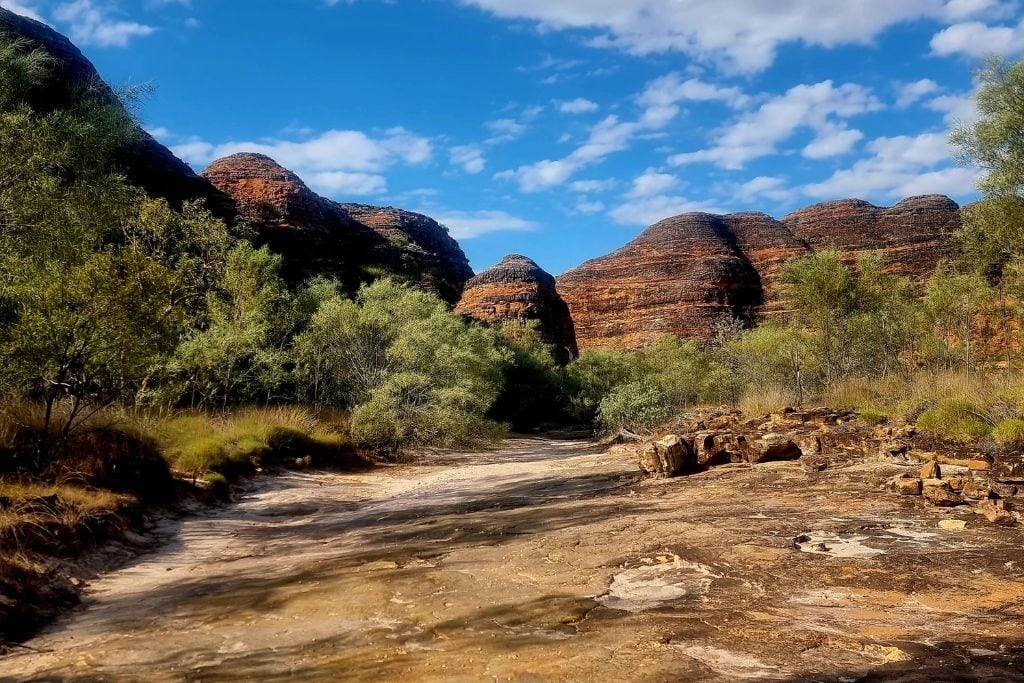
Embarking on an Outback Australia road trip promises breathtaking landscapes and unforgettable adventures. Still, it’s crucial to prioritize safety, especially when covering vast distances.
The expansive highways and long stretches between destinations can be deceivingly tiring, leading to potential safety hazards. Fatigue-related accidents are sadly not uncommon, with numerous incidents reported due to tired drivers on the road.
Additionally, speeding and distractions contribute significantly to the risk factor. Australia’s roads demand respect for speed limits and avoiding distractions, such as mobile phones or other in-car diversions. To combat these risks, incorporate these strategies into your road-tripping arsenal:
- Plan your itinerary flexibly, allowing for spontaneous breaks and detours when needed.
- Get your playlist sorted, or download your favorite podcasts in advance.
- Stay prepared for long stretches without reception. There are often a few hours between signal coverage in the Outback, so get everything sorted while you can.
- Recognize the signs of fatigue, such as drowsiness and decreased concentration, and make it a rule to stop and rest every two hours.
- Utilize designated rest areas where you can refresh and recharge.
- Be Situationally aware of your surroundings. If your Spidey senses are on alert listen to them. Be smart. Don’t leave your keys in your car when you fill up for diesel, do not pick up hitch hikers
Remember, the journey is just as important as the destination. Ensuring your safety by avoiding driving while tired, speeding, and other distractions is a non-negotiable part of the road-tripping experience in Australia.
Road Trains: Sharing the Road Safely
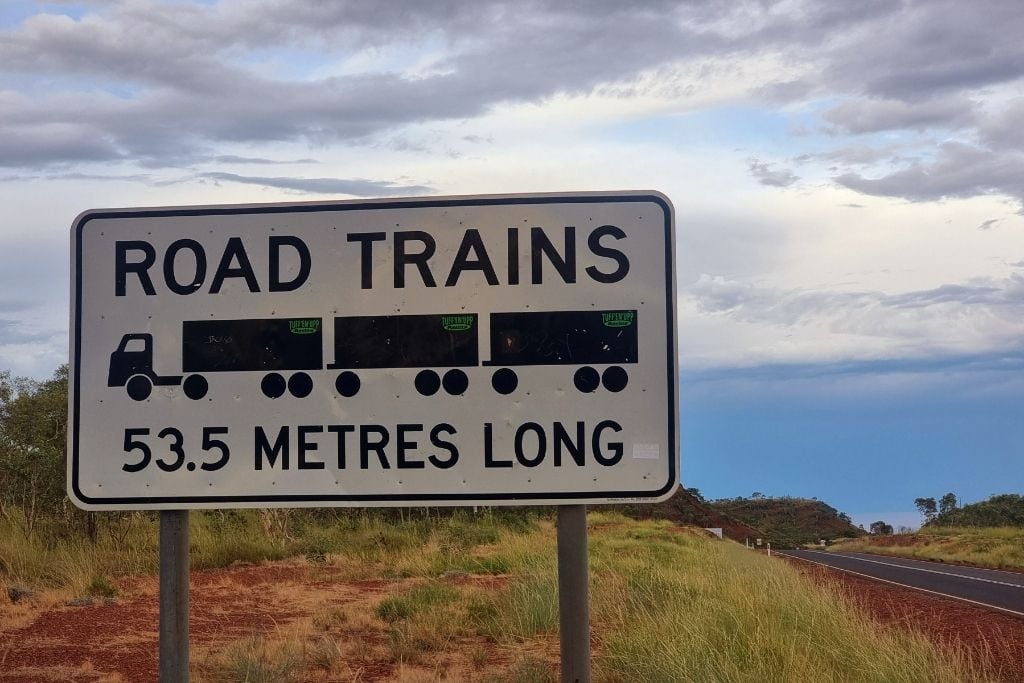
Road trains are massive trucks, often exceeding 50 meters (164 feet) in length with multiple trailers that frequent the outback Australia roads. Passing one requires caution and patience. Keep these safety tips in mind:
- Be aware of their size – They take longer to stop and maneuver.
- Give plenty of space – Do not tailgate; they create strong air currents.
- Overtake carefully – Only do so on long, clear stretches of road.
- Use UHF Channel 40 – Contact the driver before passing to confirm it’s safe.
- Expect wind gusts – The air displacement can affect vehicle stability. When you follow a roadtrain in the wind sometimes they seem to wobble a lot.
Always respect road trains and be patient. Rushing a pass could be dangerous.
7. What to Do If You Break Down in Remote Australia

In the event of a breakdown in the Outback, the golden rule is simple: STAY WITH YOUR CAR and BREATH. A vehicle is a much more visible and accessible landmark than a lone person on foot, making it easier for rescuers or passing travelers to locate you. Australia’s vast landscape makes search efforts challenging, so staying put increases your chances of being found quickly. Stay calm you have got this!
- Stay with your car – It provides shelter, supplies, and visibility.
- Use your GPS or satellite phone – If you have a Garmin InReach Mini or another satellite device, send a message to trusted contacts or authorities with your exact location.
- Ensure visibility – Pull over safely and use hazard lights, flags, or reflective markers to make your vehicle stand out.
- Remain calm and prepared – Panic won’t help; staying composed ensures better decision-making.
- Roadside assistance – If between towns and you have a satellite phone, contact your roadside service provider. Road side assistance sends out a mechanic extrordinaire to try and get you sorted. This only happens, up to 200kms from your nearest, provider If out of range, texting trusted friends via GPS can be a lifesaver.
When you pull over to the side of the road, ensure your vehicle is visible to passing traffic.
8. Fuel Planning
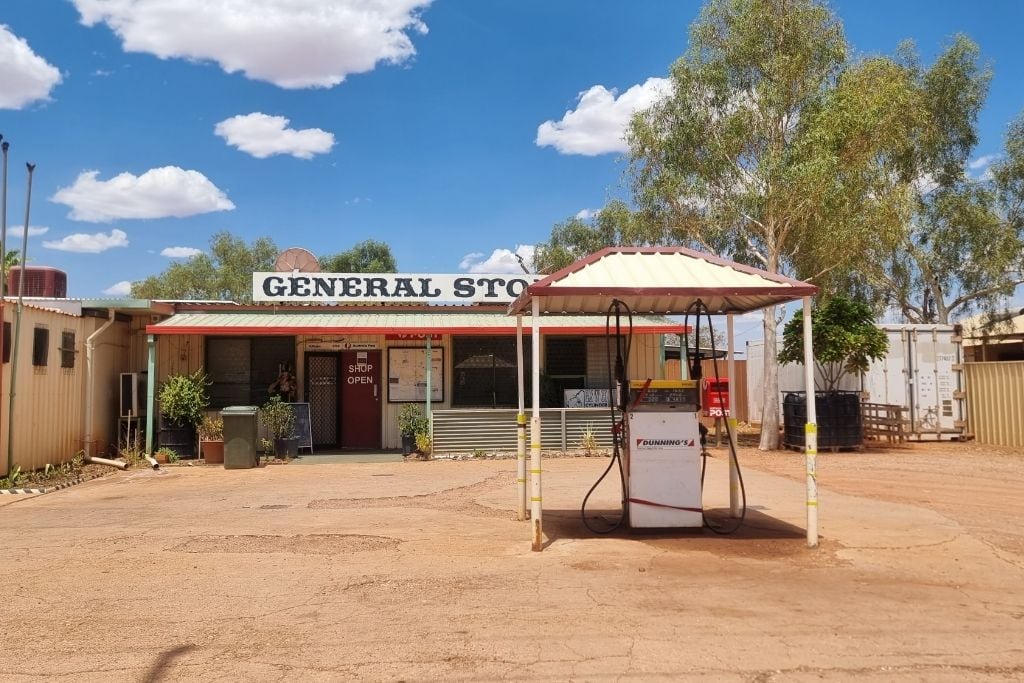
Know your vehicle’s fuel type. Mistaking petrol (gasoline) for diesel can cause costly damage. Passengers should also be aware of the correct fuel. Don’t let a silly mistake ruin your road trip
Plan fuel stops in advance. In remote regions, stations are limited. Carrying extra fuel is an option, but proper planning often eliminates the need.
Be aware of supply disruptions. In July 2023, heavy rain on the Gibb River Road caused fuel shortages. Delays can happen, so stay patient and use the time to connect with fellow travelers.
Understand fuel efficiency. Knowing your vehicle’s consumption rate helps estimate fuel needs. Factors like terrain, load weight, and driving habits impact usage. A 4×4 with heavy gear consumes more fuel than expected. Calculate distance to the next refuel point and add a buffer.
Some locations may offer only petrol (gasoline) or diesel, while others may run out entirely. Larger roadhouses usually maintain stock, but don’t rely on them blindly. Check availability where possible.
Smart fuel management ensures a smoother, stress-free trip through the Outback.
9. Route Planning & Navigation
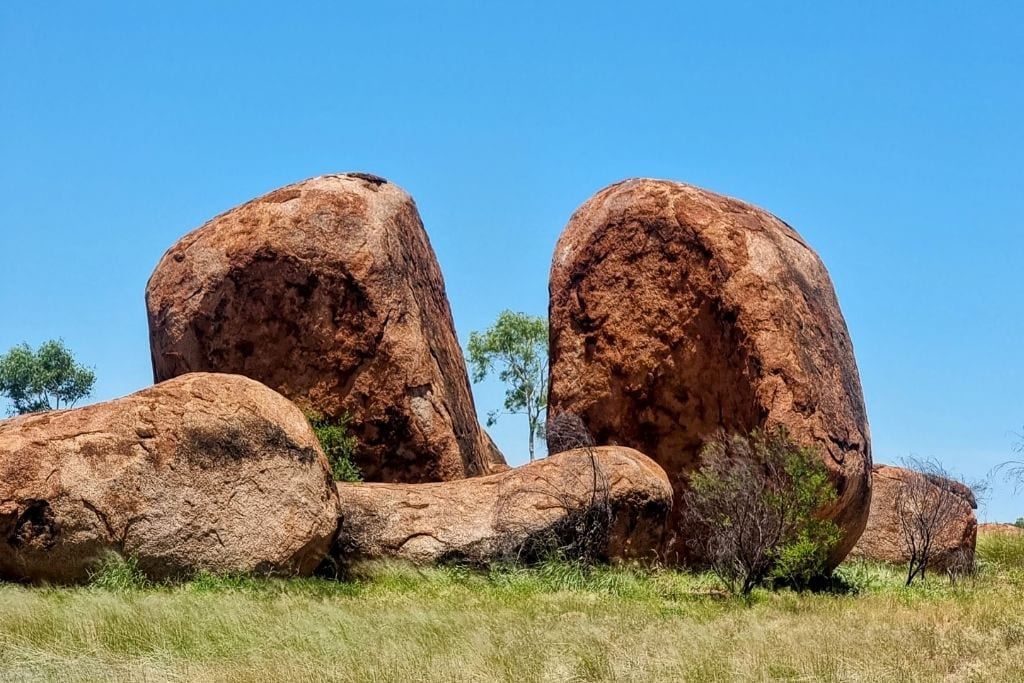
Best Outback Destinations
- Gibb River Road – Iconic 4×4 track through the Kimberley.
- Oodnadatta Track – Historic trail with fascinating Outback stops.
- Karijini National Park – Stunning gorges and waterfalls.
- The Explorer’s Way – A legendary route through the heart of Australia.
Weather & Seasonal Considerations
- Winter (May–September) – Ideal travel time with cooler temperatures.
- Summer (December–February) – Extreme heat; avoid remote travel.
- Wet season (November–April in the north) – Roads may flood and become impassable. Never drive through floodwaters.
Tell Someone Where You Are
Always inform someone of your travel plans as Outback Australia gives you every opportunity to get lost! Whether for a weekend trip or a months-long expedition, letting others know your route ensures safety. Even spontaneous travellers, like myself, should have a basic itinerary shared with trusted contacts.
Australia’s vastness makes finding lost travellers difficult. A well-thought-out plan enhances safety and ensures authorities know where to look in an emergency.
Additional Safety Measures
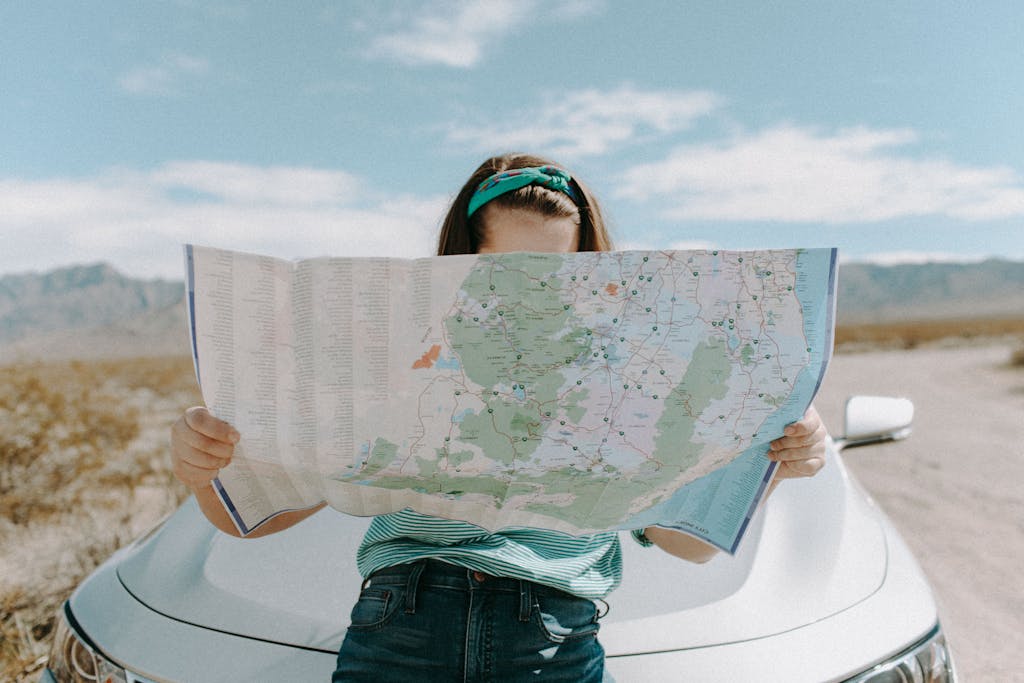
- Satellite phones – Ideal for emergency communication beyond mobile coverage.
- Personal locator beacons (PLBs) – Expensive but invaluable for serious adventurers.
- Emergency contacts – I have two trusted friends who track my location. Regular check-ins ensure my safety.
- Paper maps – Always carry a physical backup in case technology fails.
10. Australian Wildlife Encounters
Stay Alert on the Roads
Wildlife is most active at dawn and dusk but can appear anytime. Kangaroos, emus, camels, cattle, and other animals frequently cross roads. Pay attention to warning signs and drive cautiously.
Dangerous & Marine Wildlife
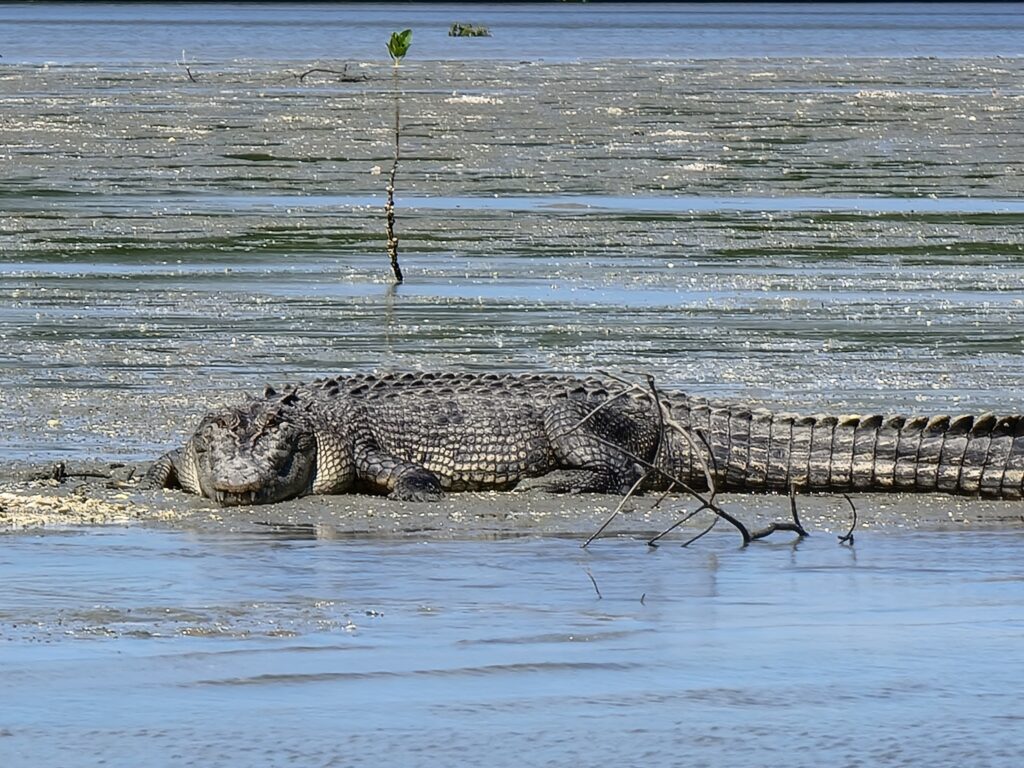
- Crocodiles inhabit waterways in Western Australia, the Northern Territory, and Queensland. They are most active at night, especially during breeding season (September–April). Avoid swimming in unknown waters.
- Box jellyfish and Irukandji are common in tropical waters from October to April. Always wear a stinger suit when swimming.
- check out my post on 5 Top Travel Tips for Navigating the Unique Australian Wild Life for more tips
Safety Tips
Ask locals or visit visitor centres for up-to-date wildlife safety advice.
Never approach or feed wildlife. They are unpredictable and can be dangerous.
Do not stop for selfies with wild animals.
Pay attention to road and beach signs.
Some beaches have jellyfish sting stations. Seek medical help immediately if stung.
The Verdict

Outback Australia is a land of wonder and adventure, but exploring it like a pro, careful planning, and knowing where you are going is essential for any successful road trip.
With proper preparation and an understanding of the Outback’s diverse landscapes and challenges, you can embark on a journey of a lifetime. Embrace this incredible continent’s natural beauty, unique wildlife, and rich culture. Let it leave an indelible mark on your heart.
Ensuring your safety on the road is paramount, and these practical tips can go a long way in making your journeys secure and enjoyable.
Remember to subscribe to my newsletter so you can keep up to date on my new posts 🙂
Travel well!

